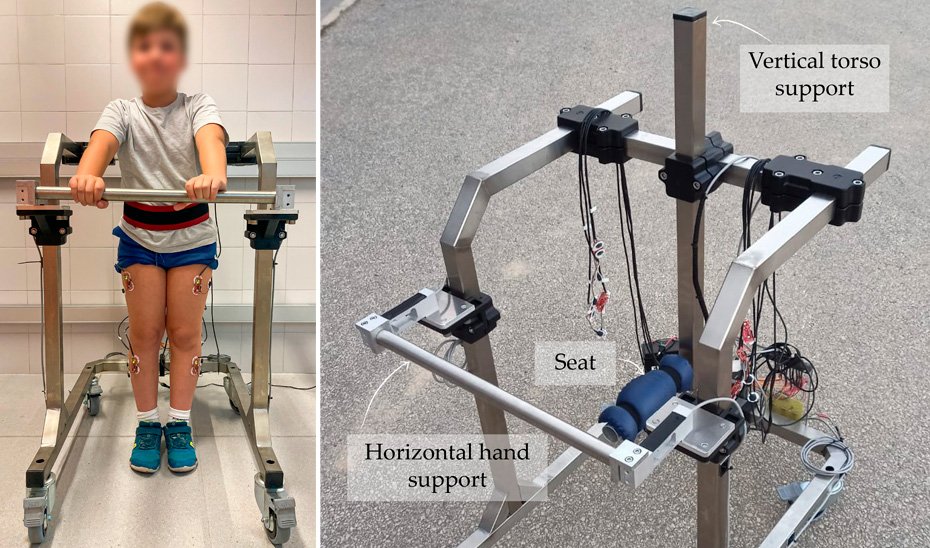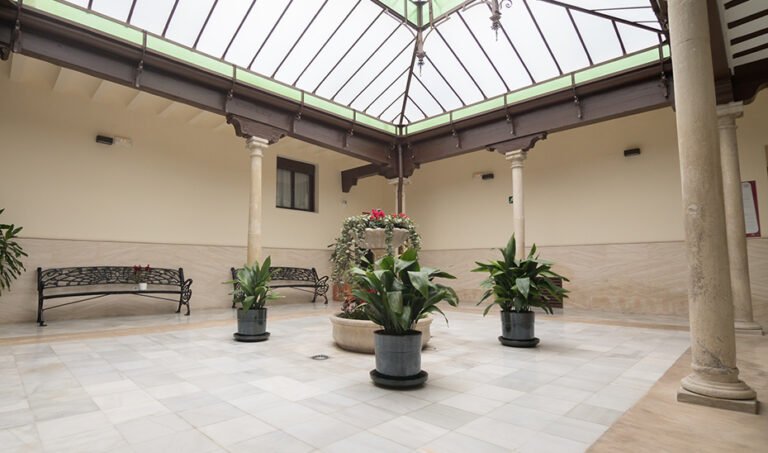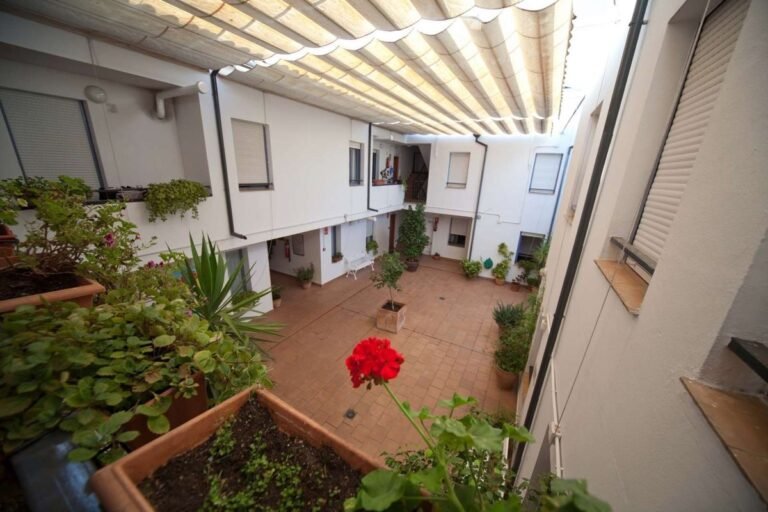
A team of researchers from the Clinical Biomechanics Laboratory of Andalusia (BIOCLINA) and the Department of Physiotherapy at the University of Malaga (UMA), in collaboration with the University of Roma Tor Vergata (Italy), has developed a pediatric walker that aids children with functional diversity, specifically those with severe mobility-affecting conditions such as cerebral palsy.
To achieve this, it incorporates sensors in its structure that record clinical information of the patient during the use of the walker. These data provide medical professionals and physiotherapists with valuable information for defining treatments and planning rehabilitation goals.
Another advantage of this device, registered as a utility model – a legal protection form designed to safeguard inventions, is its ability to adapt to the pathology and the patient’s growth and anatomy, adjusting on one hand to the degree and type of support required by the child, and on the other hand, adapting to their weight and size. It is sized for children from 4 to 11 years old. Additionally, it is lightweight and easy to transport, as it has a foldable structure.
This pediatric walker consists of a mechanical structure that provides the necessary support for the patient to walk, and an electronic part composed of a series of sensors and a microcontroller responsible for data collection. Specifically, the mechanical part has a base that includes four wheels for greater stability and ease of movement. Additionally, it has a ‘U’ shape to enhance accessibility for the patient.
Researchers involved in the development of the pediatric walker.
As support systems, it features a support for the head, chest, pelvis, or groin, which can be used or removed according to each user’s needs. Additionally, one of the front wheels has a foot brake, and the walker’s base has a second anti-shock wheel on its periphery for better protection against any potential impact.
Regarding the electronic part, it has various sensors installed in the walker itself and others placed on the patient’s body. This way, the receptors located in the walker obtain force indicators exerted by the patient on the seat and hand support primarily. Meanwhile, those carried by the patient record information about the trunk posture and muscle activity of the upper body, including the chest, back, shoulders, arms, and abdomen.
Wireless Recording
The information is stored in a server accessed through wireless technology or, alternatively, it is stored on a memory card associated with the computer. With this, the rehabilitator, physiotherapist, or occupational therapist can assess the patient’s progress outside the clinical environment and quantify treatment results in a context beyond the hospital setting, incorporating them into new treatments.
This way, healthcare professionals can have objective information about the patient’s routine. «There are patients who receive physiotherapy in an early intervention center, at school, or in a hospital for a limited time, where specific parameters are worked on that are sometimes difficult to extrapolate. We are interested in empirical results of their daily lives, and with this walker, we can access this information, from whether it is necessary to correct a posture or if certain exercises should be performed, also promoting interaction with peers,» says Rita Romero, a researcher at the Department of Physiotherapy at the University of Malaga and co-author of this utility model, to the Descubre Foundation, an organization under the Ministry of University, Research, and Innovation.
The first motion sensor of the walker, installed in one of the front wheels, records instantaneous speed and complements the overall speed data of gait training, obtained from the distance traveled and time spent. A second sensor, located at the back and on the opposite side of the front one, quantifies the ability to maintain a straight path. This data monitoring system operates autonomously, making it usable in both clinical and non-clinical environments. «The walker records all the patient’s movements during their daily activities with the help of their usual caregivers and is easy to use. In fact, it does not require specialized training,» emphasizes Romero.
Interaction of the Patient with their Environment
Furthermore, this walker enhances personal and group autonomy. «By having the structure behind, the patient frees their hands, promoting training, enjoyment, and rehabilitation through a stable and secure system. Another important factor is that it allows them to interact with other people, from playing with their peers to walking with family members,» comments Maria Prado, a researcher at the Clinical Biomechanics Laboratory of Andalusia at the University of Malaga.
During the design of this walker, funded by the University of Malaga, the authors have considered the mechanical structure to function without the electronic part as a conventional orthopedic instrument for gait training in open spaces, such as parks or recreational areas.
After conducting tests with children without motor difficulties and confirming the usability of the walker, the next step is to validate it with pediatric patients with different pathologies, as well as to incorporate artificial intelligence to extract temporal parameters and kinematic variables of gait, such as position, speed, or displacement.







